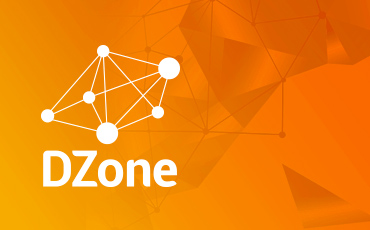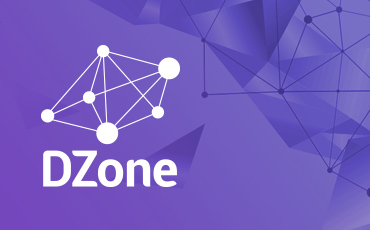Hibernate Query by Example (QBE)
What is It Query by example is an alternative querying technique supported by the main JPA vendors but not by the JPA specification itself. QBE returns a result set depending on the properties that were set on an instance of the queried class. So if I create an Address entity and fill in the city field then the query will select all the Address entities having the same city field as the given Address entity. The typical use case of QBE is evaluating a search form where the user can fill in any search fields and gets the results based on the given search fields. In this case QBE can reduce code size significantly. When to Use · Using many fields of an entity in a query · User selects which fields of an Entity to use in a query · We are refactoring the entities frequently and don’t want to worry about breaking the queries that rely on them Limitations · QBE is not available in JPA 1.0 or 2.0 · Version properties, identifiers and associations are ignored · The query object should be annotated with @Entity Test Data I used the following entities to test the QBE feature of Hibernate: · Address (long id, String city, String street, String countryISO2Code, AddressType addressType) · AddressType (Integer type, String description) Imports The examples will refer to the following classes: import org.hibernate.Criteria; import org.hibernate.Session; import org.hibernate.criterion.Example; import org.hibernate.criterion.Restrictions; import org.junit.Test; import java.util.List; Utility Methods I also made two utility methods to present a list of the two entity types: private void listAddresses(List addresses) { for (Address address : addresses) { System.out.println(address.getId() + ", " + address.getCountryISO2Code() + ", " + address.getCity() + ", " + address.getStreet() + ", " + address.getAddressType().getType() + ", " + address.getAddressType().getDescription()); } } private void listAddressTypes(List addressTypes) { for (AddressType addressType : addressTypes) { System.out.println(addressType.getType() + ", " + addressType.getDescription()); } } Example 1: Equals This example code returns the Address entities matching the given CountryISO2Code and City. Method: @Test public void testEquals() throws Exception { Session session = (Session) entityManager.getDelegate(); Address address = new Address(); address.setCountryISO2Code("US"); address.setCity("CHICAGO"); Example addressExample = Example.create(address); Criteria criteria = session.createCriteria(Address.class).add(addressExample); listAddresses(criteria.list()); } Result: 75, US, CHICAGO, Los Angeles Way2, 6, Customer 170, US, CHICAGO, Jackson Blvd 33a, 4, Delivery 63, US, CHICAGO, Main Avenue 1, 5, Bill to 37, US, CHICAGO, Jackson Blvd 33a, 4, Delivery 36, US, CHICAGO, Jackson Blvd 33a, 4, Delivery Example 2: Id Limitation This example presents that id fields in the query object are ignored. Method: @Test public void testIdLimitation() throws Exception { Session session = (Session) entityManager.getDelegate(); Address address = new Address(); address.setCountryISO2Code("US"); address.setCity("CHICAGO"); address.setId(100); // setting id is ignored Example addressExample = Example.create(address); Criteria criteria = session.createCriteria(Address.class).add(addressExample); listAddresses(criteria.list()); } Result: 75, US, CHICAGO, Los Angeles Way2, 6, Customer 170, US, CHICAGO, Jackson Blvd 33a, 4, Delivery 63, US, CHICAGO, Main Avenue 1, 5, Bill to 37, US, CHICAGO, Jackson Blvd 33a, 4, Delivery 36, US, CHICAGO, Jackson Blvd 33a, 4, Delivery Example 3: Association Limitation Associations of the query object are ignored, too. Method: @Test public void testAssociationLimitation() throws Exception { Session session = (Session) entityManager.getDelegate(); Address address = new Address(); address.setCountryISO2Code("US"); address.setCity("CHICAGO"); AddressType addressType = new AddressType(); addressType.setType(5); address.setAddressType(addressType); // setting an association is ignored Example addressExample = Example.create(address); Criteria criteria = session.createCriteria(Address.class).add(addressExample); listAddresses(criteria.list()); } Result: 75, US, CHICAGO, Los Angeles Way2, 6, Customer 170, US, CHICAGO, Jackson Blvd 33a, 4, Delivery 63, US, CHICAGO, Main Avenue 1, 5, Bill to 37, US, CHICAGO, Jackson Blvd 33a, 4, Delivery 36, US, CHICAGO, Jackson Blvd 33a, 4, Delivery Example 4: Like QBE supports like in the query object if we enable it with Example.enableLike(). Method: @Test public void testLike() throws Exception { Session session = (Session) entityManager.getDelegate(); Address address = new Address(); address.setCountryISO2Code("US"); address.setCity("AT%"); Example addressExample = Example.create(address).enableLike(); Criteria criteria = session.createCriteria(Address.class).add(addressExample); listAddresses(criteria.list()); } Result: 83, US, ATLANTA, null, 6, Customer 184, US, ATLANTA, null, 1, Shipper 25, US, ATLANTA, null, 1, Shipper Example 5: ExcludeProperty We can exclude a property with Example.excludeProperty(String propertyName). Method: @Test public void testExcludeProperty() throws Exception { Session session = (Session) entityManager.getDelegate(); Address address = new Address(); address.setCountryISO2Code("US"); address.setCity("AT%"); Example addressExample = Example.create(address).enableLike() .excludeProperty("countryISO2Code"); // countryISO2Code is a property of Address Criteria criteria = session.createCriteria(Address.class).add(addressExample); listAddresses(criteria.list()); } Result: 154, GR, ATHENS, BETA ALPHA Street 5, 2, Consignee 83, US, ATLANTA, null, 6, Customer 25, US, ATLANTA, null, 1, Shipper 184, US, ATLANTA, null, 1, Shipper Example 6: IgnoreCase Case-insensitive search is supported by Example.ignoreCase(). Method: @Test public void testIgnoreCase() throws Exception { Session session = (Session) entityManager.getDelegate(); AddressType addressType = new AddressType(); addressType.setDescription("customer"); Example addressTypeExample = Example.create(addressType).ignoreCase(); Criteria criteria = session.createCriteria(AddressType.class) .add(addressTypeExample); listAddressTypes(criteria.list()); } Result: 6, Customer Example 7: ExcludeZeroes We can ignore 0 values of the query object by Example.excludeZeroes(). Method: @Test public void testExcludeZeroes() throws Exception { Session session = (Session) entityManager.getDelegate(); AddressType addressType = new AddressType(); addressType.setType(0); addressType.setDescription("Customer"); Example addressTypeExample = Example.create(addressType) .excludeZeroes(); Criteria criteria = session.createCriteria(AddressType.class) .add(addressTypeExample); listAddressTypes(criteria.list()); } Result: 6, Customer Example 8: Combining with Criteria QBE can be combined with criteria query. In this example we add further restriction to the query object using criteria query. Method: @Test public void testCombiningWithCriteria() throws Exception { Session session = (Session) entityManager.getDelegate(); AddressType addressType = new AddressType(); addressType.setDescription("Customer"); Example addressTypeExample = Example.create(addressType); Criteria criteria = session .createCriteria(AddressType.class).add(addressTypeExample) .add(Restrictions.eq("type", 6)); listAddressTypes(criteria.list()); } Result: 6, Customer Example 9: Association With criteria query we can filter both sides of an association, using two query objects. Method: @Test public void testAssociation() throws Exception { Session session = (Session) entityManager.getDelegate(); Address address = new Address(); address.setCountryISO2Code("US"); AddressType addressType = new AddressType(); addressType.setType(6); Example addressExample = Example.create(address); Example addressTypeExample = Example.create(addressType); Criteria criteria = session.createCriteria(Address.class).add(addressExample) .createCriteria("addressType").add(addressTypeExample); // addressType is a property of Address listAddresses(criteria.list()); } Result: 84, US, BOSTON, null, 6, Customer 83, US, ATLANTA, null, 6, Customer 82, US, SAN FRANCISCO, null, 6, Customer 75, US, CHICAGO, Los Angeles Way2, 6, Customer EclipseLink EclipseLink QBE uses QueryByExamplePolicy, ReadObjectQuery and JpaHelper: QueryByExamplePolicy qbePolicy =newQueryByExamplePolicy(); qbePolicy.excludeDefaultPrimitiveValues(); Address address =newAddress(); address.setCity("CHICAGO"); ReadObjectQuery roq =newReadObjectQuery(address, qbePolicy); Query query =JpaHelper.createQuery(roq, entityManager); OpenJPA OpenJPA uses OpenJPAQueryBuilder: CriteriaQuery cq = openJPAQueryBuilder.createQuery(Address.class); Address address =newAddress(); address.setCity("CHICAGO"); cq.where(openJPAQueryBuilder.qbe(cq.from(Address.class), address); References Hibernate: · Srinivas Guruzu and Gary Mak: Hibernate Recipes: A Problem-Solution Approach (Apress) · http://docs.jboss.org/hibernate/core/3.3/reference/en/html/querycriteria.html#querycriteria-examples · http://www.java2s.com/Code/Java/Hibernate/CriteriaQBEQueryByExampleCriteria.htm · http://www.dzone.com/snippets/hibernate-query-example · http://gal-levinsky.blogspot.de/2012/01/qbe-pattern.html Hibernate associations: · http://stackoverflow.com/questions/9309884/query-by-example-on-associations · http://stackoverflow.com/questions/8236596/hibernate-query-by-example-equivalent-of-association-criteria-query JPA: · http://stackoverflow.com/questions/2880209/jpa-findbyexample EclipseLink: · http://www.coderanch.com/t/486528/ORM/databases/findByExample-JPA-book OpenJPA: · http://www.ibm.com/developerworks/java/library/j-typesafejpa/#N10C18
February 27, 2014
by Donat Szilagyi
·
62,175 Views
·
3 Likes












